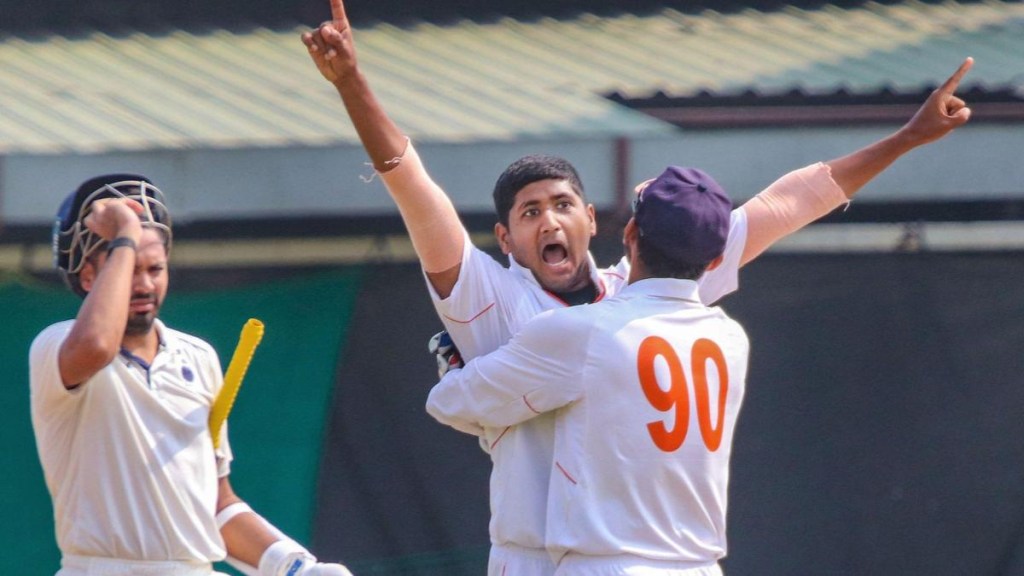The showcase match of the Indian domestic cricket calendar gets underway today – the Ranji Trophy final, with Mumbai, the most successful team in the history of the competition, hosting Vidarbha. While international cricket understandably attracts the most eyeballs, and there aren’t too many series more high-profile than one at home against England, the avid followers of the game also keep an eye on what’s happening at the level below.
India has managed to prick the Bazball balloon after going behind in the Test series – that too without the services of Virat Kohli, Mohammed Shami, and KL Rahul. This has been largely achieved through the contributions of several newcomers. However, the likes of Yashasvi Jaiswal, Shubman Gill, Sarfaraz Khan, Dhruv Jurel, Devdutt Padikkal, and Akash Deep don’t emerge from a vacuum. They have been putting up impressive numbers in domestic cricket – some for longer than others – a lot of the time away from the gaze of the casual fans.
The Ranji Trophy is a mammoth logistical and cricketing undertaking, covering the length and breadth of the country. It is often played in obscure venues, off the beaten track, and demands a lot from the players. There’s a lot of travelling required, and there’s often not more than three days between fixtures. And considering that most of the games are not on TV and there may not be huge crowds at most grounds, more often than not, the motivation to perform has to come from within.
The Ranji Trophy grind is in stark contrast to the razzmatazz and glamour of T20 leagues around the world, most prominently the Indian Premier League. Players can earn many times the money for a fraction of the exertion. Also, the hype and the instant adulation prompt many to skip domestic assignments to prepare, or be in the best shape possible, for their franchises.
Gone are the days when India players turned out for their domestic teams when they were not on national duty. They wanted to stay in batting and bowling rhythm but more importantly, there was pride in playing for the team, which first gave one the opportunity to catch the eye. There was a sense of acknowledgment, excitement, and even responsibility, to pass on the knowledge one had gained to the next batch coming in.
Different era
Granted that the international cricket calendar was not so hectic in those days, there weren’t three (or more) different formats with a surfeit of T20 leagues around the world, but it seems that an international player turns out in domestic cricket these days only when he is out of form or out of the team, or when he has been instructed to do so.
In India, specifically, the big dream for any upcoming cricketer is playing for the country, and when that dream is realised, domestic cricket is relegated to a blind spot in their consciousness. After the high of representing the country, especially if it’s in Test cricket, many may experience a letdown when returning to domestic cricket.
The best players may do so only rarely, but the professional in them is likely to prepare and play the game with the same seriousness and dedication as if they were in a big international fixture. Ironically, it’s the players who have not made a big name in international cricket are the ones more likely to give domestic cricket the short shrift.
Someone like Cheteshwar Pujara, who has had a memorable Test career for India, still plays Ranji Trophy with professionalism that could be an example for cricketers coming through the ranks. He was among the highest run-scorers in this season as well.
The presence of a big international player in a domestic fixture adds to the lustre and profile of a game, but even without that, these matches provide some nail-biting moments. This Ranji season only, there have been matches won by one wicket and even one run. The semi-final between Madhya Pradesh and Vidarbha, in which the latter overturned an 82-run first-inning lead to emerge victorious on the fifth morning, was one such memorable match. If one looks at the two playing XIs, only Umesh Yadav and Karun Nair (Vidarbha) and Avesh Khan and Venkatesh Iyer (Madhya Pradesh) had played for the country – and none of them are going to be first-choice players for India in the near future – but it didn’t dilute from the quality of the contest as the game ebbed and flowed before reaching a conclusion on the final day, which is a rarity these days even in Test matches.
Looking ahead
As far as the final is concerned, Mumbai has won the Ranji Trophy 41 times – 15 consecutive times between 1958-59 and 1972-73. There was a time when anything less than the title was considered a failure for them. That was before high-quality players began to emerge from every nook and corner of the country, and there were several sides that began to give Mumbai a run for their money.
The tournament also provides some interesting storylines. At a time when Sarfaraz has been making his presence felt after serving a long waiting period at the domestic level, his brother Musheer Khan is one of the batsmen holding the key for Mumbai, though he has played only two games.
So as another Ranji season reaches its climax, apart from keeping an eye out for the next big thing in Indian cricket, one needs to keep in mind that the Ranji Trophy carries much glory in itself as well and has a rich history. T20 franchise leagues, of more recent origin, may provide financial inducements but can never match the cricketing satisfaction that comes after a lot of hard toil, adding one’s name to a long list of great players in Indian cricket history.
